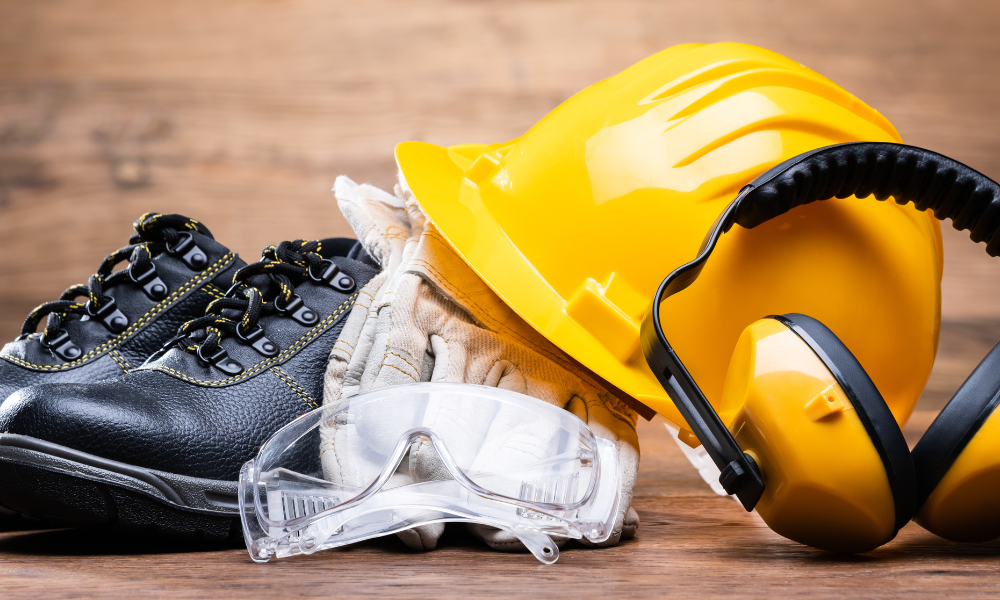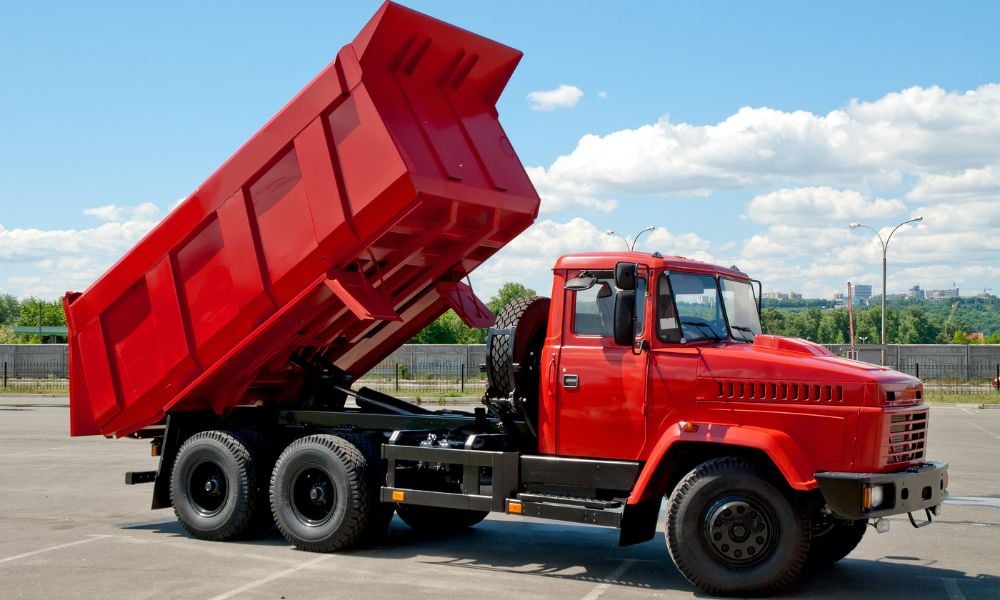Get to know the top safety equipment manufacturers in Canada. Explore industry trends, certifications, and tips for sourcing high-quality protective gear

When it comes to choosing personal protective equipment (PPE) for your workforce, going for the most reputable names that make a wide range of protective gear is a sound strategy. Due to the vast number of manufacturers in the Canadian market alone, choosing the right one for your workplace needs can be a daunting task.
As a safety manager or purchasing manager, you cannot waste time finding the right safety equipment to outfit your workforce or replace old and worn equipment. Let this guide serve as your safety equipment manufacturers list and help you make informed decisions when procuring PPEs.
The top safety equipment manufacturers in Canada
There are a few big names in manufacturing safety products in Canada today. These key manufacturers create a diverse product mix apart from PPEs. This includes hazard detection devices and other safety management solutions. Here are the top safety equipment manufacturers in the country based on their latest annual revenue figures:
1. Honeywell International Inc.
Annual revenue: US$38.5 billion
Honeywell is renowned for producing PPEs like industrial safety gloves, respiratory protection, and gas detection equipment for worksites. While it has seen profits in 2024 that surpassed its main rival, 3M, Honeywell remains second to 3M in terms of market share.
The company maintains a solid footing in the PPE market, but that will soon change dramatically. In November of 2024, Honeywell made public its decision to sell off its PPE division to Protective Industrial Products, Inc. (PIP), a company of Odyssey Investment Partners, for US$1.325 billion.
The transaction was made in cash. Honeywell’s sale of its PPE business is aligned with its strategy to further streamline its portfolio and accelerate value creation from three compelling megatrends: automation, the future of aviation, and the energy transition.
Although Honeywell will no longer produce safety gloves, helmets, and masks, the company will still provide other important safety and industrial products related to automation, energy, and aviation. These business units remain highly profitable— Honeywell is still expected to reap around US$40 billion in total revenue for 2025.
2. 3M Co.
Annual revenue: US$24.5 billion
Another American conglomerate, 3M is a global leader in safety equipment and is also a big player in Canada. It has a diverse product line that includes equipment for fall protection, helmets, welding masks, face masks, and other protective apparel.
3M has a very strong innovation-driven culture supported by extensive investment into new technologies, research and development. Its broad portfolio of patented products and market leadership in industrial safety gear like N95 respirators and protective workwear consistently make 3M a dominant player in the safety equipment sector.
3. Kimberly-Clark Professional
Annual revenue: US$19.7 billion
Kimberly-Clark, the makers of Kleenex and other successful consumer cleaning products, has its own business unit that serves as a safety equipment manufacturer. K-C Professional offers an extensive range of PPE solutions. They make protective clothing, disposable coveralls, safety glasses, gloves, respirators, and masks that all comply with the highest safety standards.
Kimberly-Clark Professional mainly supplies safety equipment to healthcare, industrial, and office environments. The company claims to employ a human-centric approach to engineering its products. For instance, its PPEs are made to prioritize workers’ safety and productivity by using comfortable, breathable designs.
KleenGuard and Kimtech are two of its most recognized brands, known for their industrial and cleanroom PPEs. K-C Professional also focuses on innovation and sustainability. For example, the company aims to make its products 100 percent “forest-free” in that they don’t use any timber.
4. DuPont de Nemours Inc.
Annual revenue: US$12.4 billion
Ironically, this American manufacturer behind famous products like Teflon, Lycra, Dacron, and Mylar once produced gunpowder and other explosives. Today, it’s one of the largest safety equipment manufacturers globally. Commonly known as DuPont, this is a historic American multinational company with a broad product portfolio that includes chemicals, materials, and personal protective equipment.
DuPont famously supplied quality gunpowder to the US military in conflicts like the War of 1812 and the American Civil War. However, the company has long since moved away from producing gunpowder to creating entire product lines consisting of synthetic polymers and materials that many other industries use today.
Some of DuPont’s famous innovations are Kevlar, Neoprene, a synthetic rubber, and Nylon. These materials have found many applications in textiles, consumer goods, and in industrial safety and PPE, contributing to billions in revenue for the company.
Kevlar, for example, has revolutionized protective apparel by contributing to the production of body armour and helmets. These can provide greater protection for military personnel, law enforcement, and industrial workers. DuPont’s success is mainly due to its consistent investment in R&D. It is also famous worldwide for its innovative synthetic materials and PPE products.
5. MSA Safety Inc.
Annual revenue: US$1.8 billion
This global safety equipment manufacturer offers a comprehensive portfolio of safety products. They make PPEs and advanced detection devices for the oil and gas, utilities, firefighting, and construction industries worldwide.
MSA Safety was the brainchild of John T. Ryan Sr and George Deike as response to a tragic mining disaster that occurred in 1912. Inspired by the need for safer mining equipment, the two founders teamed up with Thomas Edison two years later to create the electric cap lamp. This invention cut down the incidence of mine explosions by an impressive 75 percent.
MSA Safety’s portfolio consists of products that is both deep and complex, integrating electronics, mechanical systems, and advanced materials to protect users from hazardous or life-threatening situations.
Key product categories that MSA Safety offers include:
- self-contained breathing apparatus (SCBA)
- fixed gas and flame detection systems
- portable gas detection instruments
- industrial head protection (like the V-Gard safety helmets)
- fire and rescue helmets
- fall protection devices
To date, MSA Safety caters to the needs of a wide range of industries, including oil and gas, petrochemicals, fire service, construction, mining, utilities, and military branches.
6. Ansell Ltd.
Annual revenue: US$1.8 billion
Ansell focuses on glove and hand protection products. They are poised to have an even bigger presence in the safety gloves segment with its recent acquisition of the PPE business of Kimberly-Clark.
While Ansell may not be a household name, its history spans over 130 years of providing quality health and safety solutions to a wide range of industries. Ansell produces medical gloves, industrial safety gloves, protective clothing, and other similar PPEs. The company maintains a significant presence in various markets across Asia, the Middle East, Europe, Africa, Latin America, and North America.
The company maintains offices and large distribution operations in Canada, including a large facility in Québec. Ansell has a diverse product portfolio focused on gloves for various industries and applications like mechanical work, handling chemicals, healthcare, and industrial safety.
They also offer single-use industrial gloves, chemical gloves, healthcare gloves, and specialty products. These bear the well-known brands of Kimtech and KleenGuard, which were recently acquired by the company from Kimberly-Clark Professional.
7. Delta Plus Group
Annual revenue: US$400 million
Headquartered in France and founded in 1977, Delta Plus Group is a global leader in PPE manufacturing. With over 45 years of experience under its belt, the company continues to provide PPEs and collective protective equipment (CPE). Their product range includes a wide range of head, hand, foot, and fall protection, giving them a strong presence in industrial safety markets.
This company owes its success to strategic product diversification and marketing to many foreign markets, including Canada. Delta harnesses tech tools like supply chain software FuturMaster to make reliable forecasts and optimize sourcing, increasing their operational efficiency and profitability.
Such measures coupled with effective organizational management contributed to the company earning recognition from Deloitte as one of the “Best Managed Companies”.
8. Avon Technologies PLC
Annual revenue: US$205.1 million
Not to be confused with the famous company that makes beauty products, Avon Technologies is a British company specializing in respiratory equipment. They make respirators for firefighting personnel, military, and law enforcement applications. They also produce ballistic helmets.
Avon Technologies PLC was founded in 1890 in and is still engaged in the design, manufacture, and supply of advanced personal protective equipment (PPE). Their main customers are primarily in the military, law enforcement, emergency services, and industrial sectors.
The company specializes in producing:
- full-face respirators
- chemical, biological, radiological, and nuclear (CBRN) protective wear
- escape hoods
- powered and supplied air systems
- consumable filters
Avon also offers protective headgear like ballistic and bump protection helmets, along with helmet liners and retention systems under its Team Wendy brand.
Apart from the usual PPEs for industry, the military and law enforcement, Avon Technologies supplies underwater rebreather systems and thermal imaging cameras. More than a PPE provider, Avon holds a market position as an outfitter of protective gear for special applications and demanding environments.
9. Lakeland Industries Inc.
Annual revenue: US$167.2 million
Lakeland is a major manufacturing company of high-performance PPEs and safety workwear. It has an extensive product portfolio that includes chemical suits, arc flash protective apparel, fire protection apparel and heat-resistant clothing.
Lakeland has over 40 years of experience in the safety equipment industry. It caters to critical heavy industries like:
- oil & gas
- fire services
- aerospace industries
- electric utilities
- hazardous waste handling
The company is renowned for its innovative designs that reduce heat stress without compromising mobility, thus enhancing user comfort and safety. This relatively smaller outfitter owes its success to using select materials. This strategy results in high-quality PPEs that are backed by data.
Lakeland’s recent acquisition of Eagle Technical Products and Pacific Helmets allowed it to expand its reach globally and offer products to more first responders. Lakeland’s use of a balanced approach to growth, including modernizing ERP systems and operational efficiencies has resulted in substantial revenue growth and improved profit margins.
10. Alpha Pro
Annual revenue: US$57.8 million
Founded in 1989, Alpha Pro is a Canadian company that specializes in high-value disposable protective apparel. They make face shields, face masks, coveralls, protective gowns, and infection control products. The company mostly caters to healthcare facilities, cleanrooms, and industrial safety environments.
Alpha Pro mostly sources its raw materials from Asian countries, enabling it to save on costs and devote their resources to innovating and churning out quality products. The company’s success is mostly due to its ability to respond to surging demand during a health crisis, like the H1N1 pandemic. Alpha Pro swiftly answered the call to provide government-approved protective gear.
Alpha Pro maintains corporate offices in Canada and manufacturing facilities in the US, constantly innovating and diversifying its product offerings, ranging from disposable safety apparel to building supply products.
Here’s a look at the biggest safety equipment manufacturers in Canada ranked based on 2024 revenues:
Top 10 safety equipment manufacturers in Canada based on annual revenue
|
Company |
Revenues |
|---|---|
|
1. Honeywell |
$38.5 billion |
|
2. 3M |
$24.5 billion |
|
3. Kimberly Clark Professional |
$20.1 billion |
|
4. DuPont de Nemours |
$12.4 billion |
|
5. MSA Safety |
$1.8 billion |
|
6. Ansell Limited |
$1.8 billion |
|
7. Delta Plus Group |
$439 million |
|
8. Avon PLC |
$205.1 million |
|
9. Lakeland |
$167.2 million |
|
10. Alpha Pro |
$57.8 million |
Note that most of these figures are based on the latest data from this website. However, Delta Plus’s figures were converted from its Euro earnings indicated by this latest report. The figures available are in USD.
The role of safety equipment in Canadian industries
There are many good reasons why safety equipment or PPE is crucial in Canadian companies and industries. Most importantly, PPEs protect workers from various potential hazards in the workplace.
The importance and value of safety equipment
Even casual observers will say that many industrial worksites are rife with hazards. These worksites and industries are also full of risks of injuries from typically preventable accidents. Hence, the need for all sorts of safety equipment. Apart from protecting workers, having the proper safety equipment offers these benefits:
-
minimizes the risks of injuries and illnesses in the workplace
-
provides a protective barrier for employees against physical, chemical, electrical, biological and other risks
-
lowers workplace incidents
-
minimize or avoid costs that may arise from incidents like medical bills, penalties, or legal fees
-
minimize costs or lost revenues resulting from operational downtime
-
create or enhance a positive industry reputation for the company
-
make employees feel safe
-
improve employee morale
Types of safety equipment
There are many kinds of safety equipment that’s used in various industries across Canada. The various types of PPEs reflect the diversity of hazards in each work environment. The most common categories of PPEs include:
-
head protection – this includes helmets and hard hats that protect against overhead falling objects and debris or accidental impact.
-
eye and face protection – safety glasses, safety goggles, and face shields fall under this category. These are PPEs designed to protect workers’ eyes from flying objects or particles, chemical splashes, and severe impact.
-
hearing protection – this includes earplugs and earmuffs that dampen loud sounds and lower the risk of noise-induced hearing loss or hearing damage.
-
respiratory protection – respirators and face masks are under this category and are meant to protect workers from inhaling airborne contaminants. These can include toxic fumes or gases, hazardous chemicals, and dangerous dust or particulate matter that can cause respiratory illnesses.
-
hand protection – safety gloves that are cut-resistant, and special gauntlets and sleeves that protect workers’ hands comprise this category. These PPEs are invaluable in protecting hands from cuts, punctures, impact forces, and chemical or biological spills.
Overview of the safety equipment manufacturing industry in Canada
The safety equipment market in Canada is comprised of a wide array of safety products designed to protect individuals from various occupational or general hazards.
According to recent studies, the revenue from the PPE equipment market in Canada is projected to reach $6.395 billion by 2030. From 2023 to 2030, the PPE market in Canada is expected to sustain a compound annual growth rate (CAGR) of 5.9%.
The increasing regulations and growing awareness about the importance and benefits of a safe work environment are behind the strong demand for PPEs in Canada.
Safety standards governing PPEs and safety equipment in Canada
For rules, regulations, and standards on PPEs and other safety equipment, Canada mainly relies on:
- Canadian Standards Association (CSA)
- Canadian Centre for Occupational Health and Safety (CCOHS)
- Canadian Labour Code
However, the American National Standards Institute (ANSI) also plays a significant role in the regulation of PPEs and safety equipment in the country. If your industry operates on both sides of the US-Canada border, it’s very likely you will have to choose and procure your PPEs by referencing both sets of standards. Some important CSA regulations that regulate much of Canada’s PPEs include:
-
CSA Standard Z94.1 - This CSA standard governs industrial protective headgear, aka hardhats. The standard outlines the requirements for performance within acceptable ranges, and proper selection, use, and maintenance.
-
CSA Standard Z94.2 - This helps ensure that hearing protection effectively reduces noise exposure to safe levels. This standard lists the performance criteria, guidelines for selection, proper use, and maintenance.
-
CSA Standard Z94.3 - This is the domain of eye and face protection. This standard sets out the requirements for adequate levels of protection that eye and face protectors should have against chemical splashes, impact forces, and getting set on fire.
Key features to look for in Canadian safety equipment
As a safety manager or purchasing manager tasked with maintaining a safe working environment within your company, it’s crucial to know what to consider when procuring the right safety equipment.
As you work on putting together the safety equipment kit for your workers and choosing the right safety equipment manufacturer, these are the key factors to consider:
1. Compliance with appropriate safety standards
Your primary concern should be whether the safety equipment or PPEs meet the industry standards for regulatory compliance. In most cases, PPEs must conform to regulatory bodies like the CSA, but this can vary. It’s not unusual that some pieces of kit use American standards like the ANSI, which can oversee some standards for cut-resistant safety gloves, for instance.
Any PPEs you procure must be tested and have proof of passing these tests for compliance with established safety standards. This is a must, because in some provinces, local laws and safety regulations can lay down harsh penalties on companies that are amiss with their safety standards.
2. Fit and comfort of the user
Purchasing PPEs in accordance with safety standards and regulations would be rendered if these did not have a good fit for the workers who need them. PPEs that fit well will encourage their consistent use and ensure the safety of the wearer.
For example, respirators need to be checked that they fit the worker perfectly before use. If there is even the smallest leak in the seals, this can expose the worker to hazardous airborne contaminants. An ill-fitting PPE in this case negates its protective features, leaving the worker vulnerable to injuries or illnesses.
Whenever possible, think of your workers’ comfort also when using these PPEs for long shifts. Adjustable straps, breathable material, sufficient waterproofing, ergonomic design, and other comfort features can ensure worker compliance and adherence to safety protocols.
3. Versatility and adaptability
PPEs that can take on multiple roles or purposes can be used across different jobs and work environments. This sort of versatility in your PPEs can boost worker utility and reduce the need for multiple pieces of equipment.
For instance, safety work boots that have both steel toes and non-slip rubber soles can protect workers’ feet from heavy objects and insulate them against electrical injuries. Versatile PPEs can be very valuable in industries where your staff may change roles or face different types of work hazards.
4. Durability and ease of maintenance
The durability of the protective equipment you purchase and issue to workers is another important consideration, as is its ease of keeping it clean and functional. PPEs made from high-quality materials can ensure that they have a long service life.
Procuring high-quality PPEs can also ensure that they are compliant with safety standards. PPEs made with inferior materials or manufacturing techniques may not deliver on their promised safety features. Worse, workers may even decide not to use them.
Make it a policy to obtain high-quality, durable PPE only from the best safety equipment manufacturers. Coordinate with a safety professional to ensure that workers are trained to use them properly and maintain them regularly.
Remember that durable, easily maintained PPEs are less likely to fail when their protective features are needed most.
5. Vendor reputation and after-sales service
The reputation of the PPE supplier and how they handle queries, defective items, and other customer concerns are another important consideration. They may also provide warranties and training on the use of PPEs. As much as possible, purchase your PPEs and other safety equipment from established safety equipment manufacturers suppliers and brands.
6. Cost effectiveness
Finally, consider the PPE’s cost effectiveness. While you should buy safety equipment that’s within your budget, avoid compromising on quality or safety standards. Remember that investing in quality PPEs provides cost savings in the long run by avoiding work incidents and the cost of constant replacement.
While the market performance and sales revenues of a particular safety equipment manufacturer influence buying decisions, this should not be the sole basis for choosing a particular brand or product. Safety managers and purchasing managers should practice their due diligence and take the time to check which PPE manufacturer’s products fit their needs, budget, and industry standards best.
Did you find this guide on safety equipment manufacturers informative or useful? Let us know in the comments.





